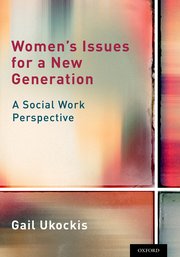By Gail Ukockis | (Informed Comment) | – –
One statue of Robert E. Lee that will probably remain standing is at the battlefield of Gettysburg. Here is an appropriate place for his statue, since he and General Meade were the two commanders of the opposing forces. He sits erect and proud upon his horse. Nearby is the field where Pickett’s Charge occurred, a military maneuver that was obviously doomed to fail. Lee sent 12,000 soldiers across an open field where they were slaughtered.
Pickett’s Charge reminds me of the lost cause of the white supremacists. Hundreds of men (and a few women) marched in the streets of Charlottesville as if Tiki torches, Nazi flags, and ugly words could revive a dying belief system. The white supremacists invaded the city like Lee had invaded Pennsylvania—in a futile effort to keep the war going by pushing for an offensive maneuver. Whether resulting from Lee’s orders or an internet movement, both offensives were destructive to others and themselves.

Women’s Issues for a New Generation: A Social Work Perspective [Click]
The Confederate soldiers, of course, were much more sympathetic characters than the Charlottesville marchers. However, one key feature connects the soldiers with the marchers—disposability. The magnitude of the losses during the Civil War is still staggering, with 2% of the U.S. population killed. Because the military commanders deemed the soldiers’ lives to be disposable in the context of this war, the sunny farm fields became hellish landscapes.
The Charlottesville marchers did not have to deal with the mass slaughter, but they also showed signs of feeling disposable. The “Jews will not replace us” chant and their anger toward immigrants indicate that these men feel replaceable. Whether displaced or low-wage workers, they probably feel like they deserve better. Economic dislocation caused by technological changes (e.g., robotics in the factory and Internet shopping causing retail jobs to disappear) are related to the marchers’ anxiety, which made most of them allying themselves with a billionaire president who represents the extreme of capitalism. Like the Confederate soldiers who did not own slaves and would probably never be able to afford to buy even one, the marchers are fighting for the possibility of their own wealth in an unequal society.
Besides disposability, the soldiers and marchers were also fighting for a dying belief system. The Mississippi Declaration of Secession, for example, stated that: “Our position is thoroughly identified with the institution of slavery – the greatest material interest of the world.” Despite this bold proclamation, though, slavery was becoming more and more unacceptable in the nineteenth-century world; even Tsarist Russia started to free their serfs in 1861. Besides recognizing how repugnant it is to own another human, this country was also moving toward an industrial economy that had no room for the “peculiar institution” found on plantations.
The dying belief system of the marchers includes racial purity and economic nationalism. Social scientists and other experts have long claimed that “race” is a social construct. The DNA tests by Ancestry.com can now undermine the concept of racial purity, but a recent article states that only one-third of the white supremacists who got tested accepted their results. The others either denied or ignored the results. One white supremacist even commented that as long as he did not see a Jew in the mirror, he knew he had the right genetic background.
Intermarriage is another reality that contradicts the belief in racial purity. Barack Obama is biracial and Donald Trump’s son-in-law is Jewish. Countless American families reflect the multi-racial dimensions of this culturally diverse nation. Unfortunately for the white supremacists, there never was a monoculture in this country because we were always diverse regarding ethnicity, language, and religion. Homogeneity may exist in places like Finland, but “racial purity” in the U.S. is as elusive as a unicorn.
Economic nationalism, a theme promoted by Steve Bannon and other alt-right thinkers, is another fiction. Bannon’s plans to revitalize the U.S. economy included trade barriers and infrastructure spending. Could the U.S. ever “de-globalize” itself from the international system? The populist appeal of economic nationalism is undeniable, but so far Appalachia and other troubled areas have seen no results. While driving through Pennsylvania to Gettysburg, I saw a billboard featuring a coal miner begging for his job back. The hills of Pennsylvania, though, also had several windfarms that represented the new energy industries. Like the hope that racial purity will save this country, economic nationalism is merely a deceit.
Pickett’s Charge, inspired by a dying belief system, marked the beginning of the end of the Confederate cause. As our nation struggles with the aftermath of the Charlottesville march, my strongest hope is that this event is the beginning of the end of white supremacy. May the white supremacists acknowledge their own lost cause and find a belief system that fosters peace instead of hate.
Gail Ukockis, PhD, MSW, MA, is an educator and social worker with an eclectic background that includes graduate studies in history. For eleven years, Dr. Ukockis taught a women’s issues course at Ohio Dominican University, which served as the foundation for this textbook. Her research interests also include HIV/AIDS, cultural competence, and human trafficking. She is author of Women’s Issues for a New Generation: A Social Work Perspective (Oxford: Oxford University Press, 2016).
—-
Related video added by Juan Cole:
CBS DFW: “Thousands Attend Rally Against White Supremacy In Dallas”



 © 2025 All Rights Reserved
© 2025 All Rights Reserved